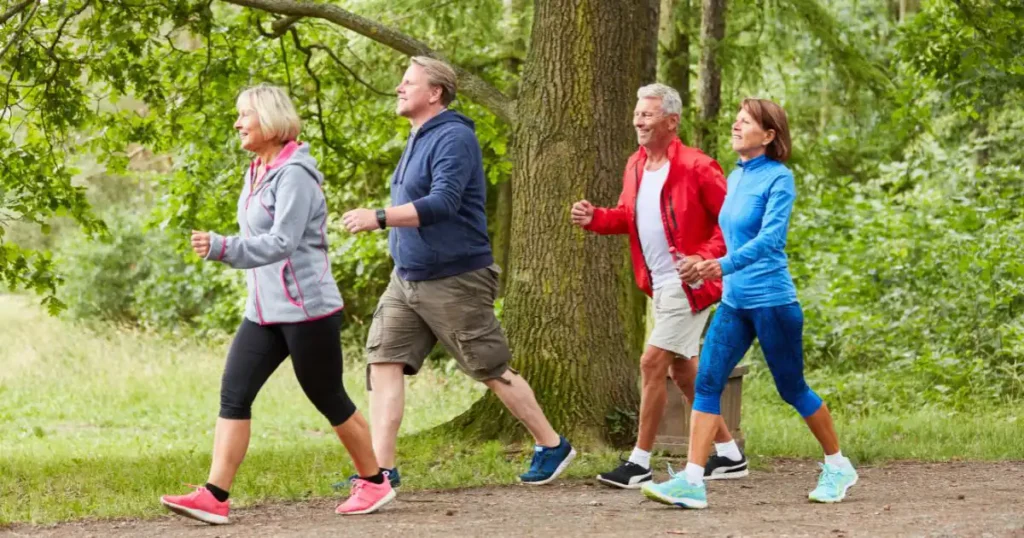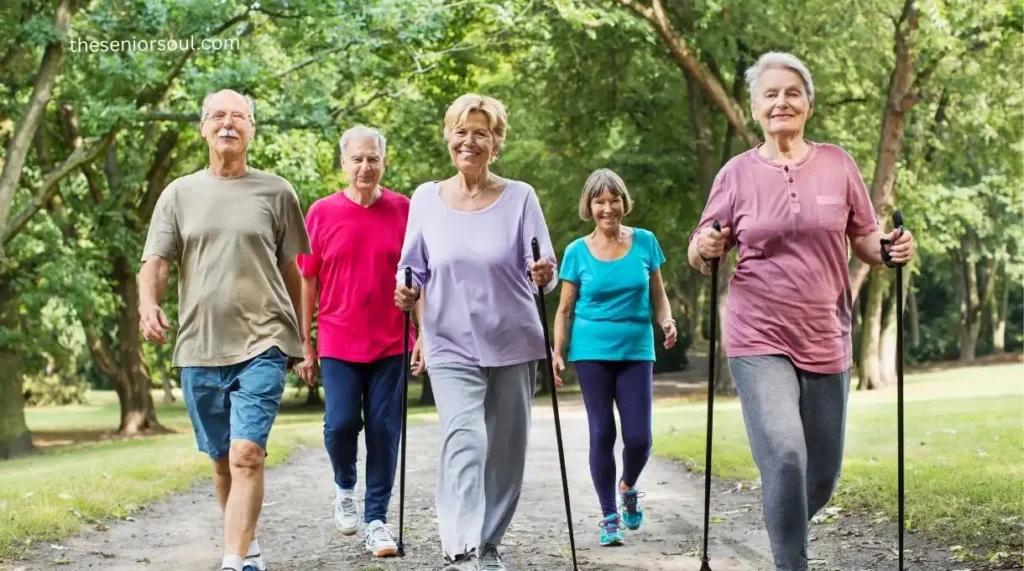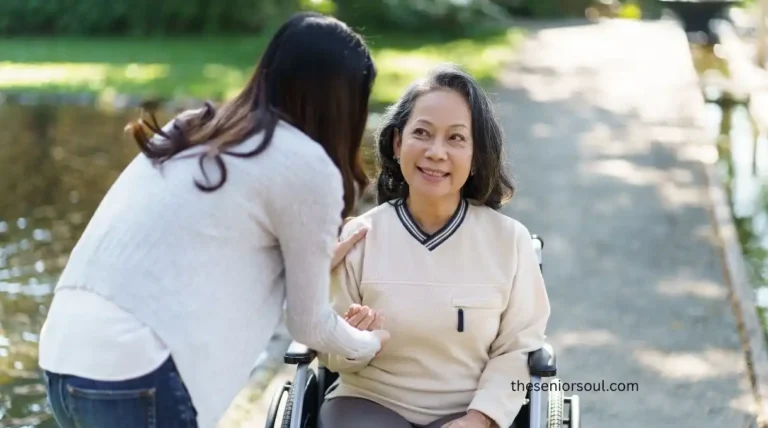Is Joining Walking Groups for Seniors the Key to Overcoming Mood and Health

As we get older, it’s common to feel less energetic, more isolated, or even a little down. But did you know that something as simple as walking could lift your mood, improve your health, and make you feel more connected? Walking groups for seniors are a fantastic way to combat the emotional and physical challenges that often accompany aging.
In this article, I’ll walk you through how joining a walking group can boost your mood, increase your physical activity, and provide social benefits. I’ll also explain why this activity is ideal for seniors and how it can become a daily part of your routine.
Table of Contents
Decreased Activity and Social Isolation
As you age, it’s easy to fall into habits that lead to less physical activity. After retirement or losing loved ones, you may find yourself staying home more often, watching TV, or simply feeling too tired to exercise. These factors can lead to two significant problems: decreased physical health and increased social isolation.
Many seniors struggle with physical activity. According to the Centers for Disease Control and Prevention (CDC), nearly 30% of adults aged 65 and older are physically inactive. Lack of exercise can contribute to a variety of health issues, including cardiovascular disease, diabetes, and mobility problems. Additionally, when you’re not as active, your mental health can also suffer. Research shows that regular physical activity can reduce the risk of depression and anxiety, but if you’re not moving enough, you’re more likely to feel down.
Another challenge seniors face is social isolation. As you age, it’s common to lose touch with friends or family members, which can lead to loneliness. A study by the National Institute on Aging found that loneliness in seniors is associated with an increased risk of developing conditions like heart disease and cognitive decline. Loneliness can also exacerbate feelings of depression, making it harder to maintain a positive outlook on life.
How These Problems Affect Your Well-being
When you’re not as physically active as you should be, your body starts to feel the effects. Simple tasks like walking to the store or climbing stairs can become more difficult. Muscles weaken, bones become more fragile, and your heart and lungs aren’t as strong as they used to be. These physical changes don’t just affect your ability to move around ,they can also lower your overall energy levels, which makes it harder to get motivated to exercise.
But the problem goes beyond just physical health. When you’re not engaging in physical activity, it’s easy to feel disconnected from others. The more isolated you become, the harder it is to find joy in everyday life. I know this from experience. It’s easy to let loneliness creep in when there’s no one around to talk to, and the days feel like they blur together. The lack of social connection can make you feel like you’re just going through the motions of life, without any real purpose or fulfillment.
Walking Groups for Seniors to Boost Mood and Health
One of the best solutions for these challenges is to join a walking group for seniors. Let’s break down how walking groups can address the problems of physical inactivity and social isolation, and why they’re the perfect option for improving your overall well-being.

Boost Your Mood with Physical Activity
The good news is that walking is a low-impact exercise, which means it’s easy on the joints and muscles. According to the Mayo Clinic, walking can help improve your cardiovascular health, strengthen muscles, and boost your immune system. These physical benefits are great for seniors because walking is gentle enough to do regularly, even if you have some mobility limitations.
But the benefits don’t stop at physical health. Walking is also a natural mood booster. Physical activity releases endorphins, the “feel-good” chemicals in your brain, which can help reduce feelings of depression and anxiety. Even just 30 minutes of walking a day can improve your mood and energy levels, helping you feel more positive and less stressed.
Here’s an example of how this works: After walking for just a few weeks, many seniors report feeling less fatigued and more energized. One participant in a study by the University of California, San Francisco, said that joining a walking group made her feel “happier and more confident.” When you’re walking with others, you get the added benefit of enjoying the outdoors, which has been shown to further improve your mood.
Socialize and Combat Loneliness
Walking groups also tackle the problem of social isolation. A study published in the American Journal of Preventive Medicine found that seniors who engaged in social activities like walking groups experienced lower levels of loneliness and depression. Walking in a group creates a sense of community and connection, and you’ll be more likely to engage in conversation with others, which can help you form lasting friendships.
Think about this: How many times have you felt better after talking to someone, even if it was just a short chat? That’s because social interactions are a key part of maintaining a positive outlook. When you join a walking group, you’re not just exercising , you’re also making connections. Walking together gives you the chance to catch up with old friends or meet new ones, which helps combat feelings of loneliness.
In my own experience, joining a walking group was a game-changer. It not only improved my physical health but also gave me the chance to bond with other seniors who were experiencing similar challenges. We didn’t just walk together ,we shared stories, gave each other support, and laughed together. This social aspect of the walking group made me look forward to our meet-ups and made me feel less isolated.
Stay Consistent and Form Healthy Habits
The key to seeing long-term health benefits from walking is consistency. Walking groups can help you stay committed to a regular exercise routine. When you know others are counting on you to show up, you’re less likely to skip your walk. This accountability can make a huge difference in sticking with a fitness plan.
Additionally, walking with a group creates a supportive environment. If you’re worried about your fitness level, being part of a walking group ensures that you’re not alone. Group members can walk at a pace that suits you, and you can gradually increase your activity level as you feel more comfortable. In fact, research shows that seniors who walk regularly have a significantly lower risk of developing chronic conditions like diabetes and heart disease.
Here’s a practical way to start: Look for a local walking group in your area. If you don’t find one, consider starting your own. You can invite friends or neighbors to join, and you could meet at a nearby park or community center. Even if it’s just a small group of two or three people, having someone to walk with will motivate you to keep going.
Walking Group Success Stories
Let me share a couple of success stories to show you how walking groups have worked for seniors just like you.
Mary’s Story
Mary, 72, had been struggling with her health and loneliness after her husband passed away. She felt unmotivated to exercise and spent most of her time alone at home. But after joining a local walking group for seniors, Mary found herself feeling more energized. She lost weight, improved her stamina, and even made some new friends. “I never thought walking would do so much for me,” she says. “It’s the best decision I’ve made in years.”
John’s Story
John, 68, had never been particularly active. He didn’t enjoy going to the gym and felt self-conscious about working out. But when he joined a walking group, he discovered that he loved walking outdoors. The group was welcoming, and he appreciated the opportunity to talk to others while staying active. John says that he now looks forward to his weekly walks and feels more connected to the community.
Start Walking, Start Connecting
Walking groups for seniors are a simple yet effective way to improve your health, lift your mood, and fight loneliness. If you’ve been feeling isolated or lacking motivation to exercise, joining a walking group could be the change you need. It’s a great way to stay physically active, meet new people, and form lasting connections that improve your quality of life.
If you’re ready to take the first step, find a local walking group or start your own. You’ll soon discover the power of walking, not just for your body, but for your mind and spirit. So, why wait? Start walking, start connecting, and experience the positive impact it can have on your life.
RELATED POSTS
Senior-Friendly Apps to Transform Healthcare for Older Adults in the Digital Age
Easy Dinner Ideas for Seniors to fit busy days
Therapy Writing Prompts for Seniors: A Path to Healing and Reflection
Frequently Asked Questions (FAQ) About Walking Groups for Seniors
What are the benefits of walking groups for seniors?
Walking groups for seniors help improve physical health, reduce the risk of chronic diseases, boost mood, combat loneliness, and provide social engagement, which can enhance overall well-being.
Are walking groups for seniors free to join?
Many walking groups for seniors are free, especially those organized by local community centers or non-profit organizations. However, some may require a small fee to cover expenses like guides or refreshments.
How do I find a walking group for seniors near me?
You can find walking groups for seniors by checking local community centers, senior citizen clubs, health organizations, or social media platforms. Websites like Meetup also list walking events for seniors in your area.
What is the ideal walking pace for seniors in a group?
The ideal walking pace for seniors is moderate, where you can still converse comfortably but feel your heart rate increase. Most walking groups will accommodate different fitness levels, walking at a pace that suits everyone.
Can walking groups for seniors help with mental health?
Yes, walking groups for seniors have been shown to reduce stress, anxiety, and symptoms of depression. Physical activity releases endorphins, and the social interaction helps combat loneliness, improving mental well-being.
How often should seniors walk in a group to see benefits?
For noticeable benefits, seniors should aim to walk in a group at least three times a week for 30 minutes. This frequency helps build endurance, improve cardiovascular health, and maintain consistent mood boosts.
Are walking groups for seniors safe?
Walking groups for seniors are generally safe, especially if participants walk at their own pace. Many groups are led by experienced guides, and participants can adjust the pace to match their abilities, ensuring safety.
What should seniors wear when joining a walking group?
Seniors should wear comfortable, supportive shoes and weather-appropriate clothing. Breathable fabrics and layers are recommended for comfort. Proper footwear prevents discomfort and injury, making the walking experience safer and more enjoyable.
Do walking groups for seniors provide any health-related guidance?
Some walking groups for seniors offer health-related guidance, such as warm-up and cool-down exercises or tips on maintaining proper posture while walking. Occasionally, health professionals may also provide educational sessions.
Can walking groups for seniors help with weight loss?
Yes, walking groups for seniors can contribute to weight loss when combined with a balanced diet. Regular walking helps burn calories, improve metabolism, and enhance overall physical fitness, aiding in gradual weight loss.






